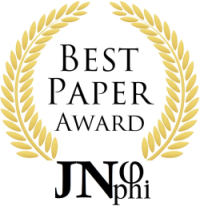How to Create a Life or Mind: As the Explanation of Our Consciousness, Intelligence and Language
Abstract
Against the ideas of dualism, logocentrism, anthropocentrism, animism, panpsychism, biocentrism, neurocentrism, foundationalism, computationalism, especially substantialism, reductionism and even physicalism*, the author argues that life may be the only non-reductive concept, even the only ontological concept, with which we may explain our consciousness, intelligence and language. Life, as defined in this article, explains but not only human brains, and even not only biological organisms. Still, the mind, also as defined in this article, is the only one it explains. No mind may exist if not be a life or lives, and no life may exist if not be a mind or a part of it. If it is the mind that needs to be explained, it must finally and fundamentally be explained as a life or lives. If the question is about the origin of the mind, a life or lives must be the ultimate answer. In other words, life is the only attribute of mind, and mind also the only attribute of life, and therefore, consciousness, intelligence and language must be the properties of all the living systems, including non-biological living systems. A model of mind is hypothesized based on the analysis of two kinds of lives and their relationship with matter and energy. It may be deduced from this model: 1. All the memories of a living brain are its intelligence. 2. Both consciousness and nonconscious are only meaningless languages used in the communication among lives in an awakened brain. 3. Life is the only meaning of all those memories and languages. Ontologically, life may even be the only meaning of all matter and energy.
Keywords:
Life, Mind, Brain, Consciousness, Intelligence, Language, Memory, Qualia, Meaning, Mind-body relation, Natural selectionDownloads
Metrics
References
DeSilva JM, Traniello JFA, Claxton AG and Fannin LD. When and Why Did Human Brains Decrease in Size? A New Change-Point Analysis and Insights From Brain Evolution in Ants. Front Ecol Evol 2021; 9:742639.
Goff P, Seager W and Allen-Hermanson S. Panpsychism. The Stanford Encyclopedia of Philosophy. https://plato.stanford.edu/archives/sum2020/entries/panpsychism/. 2020.
Hatfield G. René Descartes. The Stanford Encyclopedia of Philosophy.
https://plato.stanford.edu/archives/sum2018/entries/descartes/. 2018.
Kringelbach ML and Deco G. The turbulent brain.
Downloads
Published
How to Cite
Issue
Section
Categories
License
Copyright (c) 2022 Xinyan Zhang

This work is licensed under a Creative Commons Attribution-NonCommercial-ShareAlike 4.0 International License.
Authors continue to hold copyright with no restrictions.














